Comparison of Photography Perspectives
| ✅ Paper Type: Free Essay | ✅ Subject: Photography |
| ✅ Wordcount: 3661 words | ✅ Published: 23 Sep 2019 |
Contents page
Assignment: Learning from the Past
Page 1: Information and contact info
Page 2: Contents page
Page 3: Figure Contents page
Page 4: Perspectives & photographic beginnings
Page 5: Photographic beginnings
Page 6: Photographic beginnings
Page 7: Photographic beginnings & Photography as Art
Page 8: Photography as Art
Page 9: Photography as Art
Page 10: Photography as Art & Photography as Truth
Page 11: Photography as Truth
Page 12: Photography as Truth
Page 13: Photography as Truth
Page 14: Photography as Truth
Page 15: Photography as Truth &
Photography Everywhere
Page 16: Photography Everywhere
Page 17: Photography Everywhere
Page 18: Photography Everywhere
Page 19: Overall conclusion
Page 20: Bibliography
Page 21: Bibliography
Figure Contents Page
Page 5: Figure 1: Daguerreotype of the moon 1840
Page 5: Figure 2: William Fox Talbot: Calotype 1842/43
Page 6: Figure 3: Eadweard Muybridge 1877 horse experiment
Photographic Perspectives
This piece is going to show the perspective of photography in four areas: Photographic beginnings, photography as art, photography and truth and photograph everywhere.
Photographic Beginnings
The first permanent photograph was believed to have been published between 1826 and 1827 by a French man named Joseph Nicephore Niepce. This image was named ‘View from the Window at Le Gras’. Niepce created a material that expanded depending on its exposure to light: this process was called heliography and it used a process known as lithography. However, this process was not without its flaws, as the material created required a minimum of eight hours’ exposure, for a single image.
Despite Niepce’s creation, the term photography wasn’t used until 1839. The term was first used by an Englishman named Sir John Herschel. The term photography originates from two Greek words; ‘photo’ and ‘graphia’. ‘Photo’ means light and ‘graphia’ means writing and drawing, thus suggesting that the photography means to write or draw with light. As a result, the first official record of the photograph, under the term photography is dated to have been published in 1839 by a French man named Louie Daguerre. Photography was expensive between 1826 and 1839 and therefore it was only used by the ‘upper class’ that could afford to experiment using scientific knowledge, which is why photography only became public knowledge in 1839.
Nicephore formed a partnership in 1829 with Louie Daguerre to try to reduce his eight-hour exposure time. This led to the next development: Louie Daguerre, using what he had worked on with Niepce, created plates made of silver copper material. This creation allowed him to take the 8-hour exposure and reduce it down to just thirty minutes. This invention was later named the Daguerreotype in 1840. In 1840 using his invention he was able to produce the first fixed image of the moon.
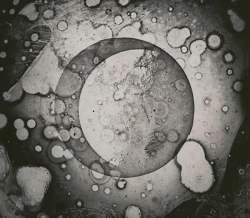

Figure 1: Daguerreotype of the moon 1840
This image proves that technology can fix what the naked eye can’t. Despite this image the prototype of the Daguerreotype had flaws, the material was expensive to produce, meaning that only one print of the image could be produced at once. Thus, suggesting that in order to make any replacement copies of the image two identical cameras would need to be set up next to one another and triggered at the same time.
This led to the creation of the Calotype by English scientist William Fox Talbot. The Calotype used Latent material, allowing the image to be fixed to paper. It also had flaws as the images were produced as negatives, but the material was cheaper, making it easier to produce more than one copy of a single image. According to the historic photographs website, (https://www.bl.uk/onlinegallery/features/photographicproject/photographicprocesses.html) the Calotype was easier to make copies because the process did not require any development or fixing materials, instead it only required washing.
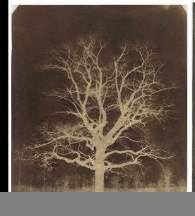

Figure 2: William Fox Talbot: Calotype 1842/43
The Calotype was introduced in 1841 and, originally is said to have been created to fix the flaws of the Daguerreotype, on the other-hand this may not be the case. In order for the inventions to be published each scientist had to provide a scientific paper stating all their findings and what led them to their designs. It was these publications of their findings that prove that the Calotype may have been invented before the Daguerreotype and it just happens that the latter became public knowledge earlier. Talbot’s research paper was published on the 31st of January 1839, whereas Daguerre’s paper wasn’t published until the 19th of August the same year. Thus, suggesting that the Calotype was an earlier invention.
The ‘Great Exhibition’ was held between May 1st and October 15th, 1851 in Hyde Park London, it featured 770 of both the Calotype and Daguerreotype. The aim was to portray work that showed the industrial, artistic and technological achievements for the 9 nations that entered. This was one of the first exhibitions that showed photography as art.
Another creation that helped to change photography was the invention of movement photography. The first set of movement images were taken by an English man named, Eadweard Muybridge. In 1872 he was hired by Leland Stanford to take images of horses, in order to assess whether all four hooves of a racehorse leave the ground at once. For his experiment Muybridge placed 24 identical ‘large plate cameras’ in a line, the horse would trigger the cameras by breaking a trip wire as it ran past the lenses. In 1877 his images finally proved that all four hooves do in fact leave the ground together for a split second.
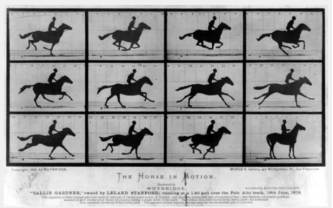

Figure 3: Eadweard Muybridge 1877 horse experiment
As a result of the inventions created between 1826 and 1877 photography had evolved from an expensive scientific experiment to an everyday process used by a wider audience, due to easier to use equipment.
Photography as Art
The Pictorialist movement dominated photography during the late 19th century and early 20th due to its popularity up until World War 1, its competition being modernism. Pictorialism was in part a reaction against the ease of taking images from the 1880’s. The Pictorialist photographers aimed to depict normal places with psychological and spiritual meaning and focusing on interpretive qualities rather than documentary qualities. The movement was influenced heavily by the pre-raphaelites. They did this by using light, shade and soft focusing techniques to create an atmosphere of their choosing. The movement was most popular in the USA, Europe, Asia and Australia between 1890 and 1930. It eventually gave way to realism in the 1920’s.
The term realism is given to those that depicted scenes without making them abstract. Realism was a strong art movement in France and its aim was to rebel against traditional historical and religious subjects.


Figure 4: Paul Strand: 1915 ‘Wall Street, New York’
The term F.64 refers to a small aperture setting for large-format cameras, to give a large depth of field and ensures that the image has a sharp focus in both the foreground and background. This aperture setting was also used as the name for a group of photographers during the 20th century, in the California area of the USA. The group’s aim was to fight against the artistic movement known as pictorialism. They did this by producing images that were carefully framed with characteristics such as sharp focusing. The group’s influence was straight photography. They printed their images as negative contact prints with sharp focus on glossy paper.
Famous photographer Edward Westin gave Willard Van Dyke his start by offering him an apprenticeship. After witnessing the success of an exhibition by his mentor in 1931, Dyke decided to stage his own exhibition at his home.

Figure 5: Edward Westin 1930 Exhibition
This led to Dyke opening his own home up as an exhibition space where he showed off his work.
Dyke’s house exhibition eventually became a meeting place for a close group of photographers, for who were interested in displaying their own work to the public. This group later became known as the F.64 Group.
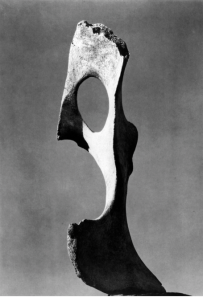

Figure 6: Willard Van Dyke ‘Bone and Sky’ 1932
The F.64 Group was founded by Van Dyke along with Ansel Adams but others say that Imogen Cunningham helped Adams start the group. The group also consisted of Edward Weston, Henry Swift and John Paul. At times guest photographers were invited to produce their work with the group, these included: Brett Weston, Sonya Noskowiak, Consuelo Kanaga, Alma Lavenson and Preston Holder.
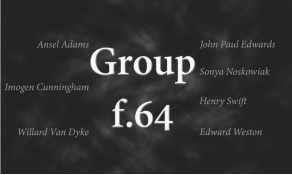
Figure 7: Group F.64
Together the group of photographers convinced the director of the De Young Museum in San Francisco to allow them to put on their first exhibition, which eventually opened to the public on the 15th of November 1932 and ran for approximately six weeks. Each image in the collection was priced at $10.00 except for Edward Weston’s images which were each priced at $15, due to his greater experience. The collection showed 10 pieces by Adams. Edwards, Noskowiak. Swift, Van Dyke and Edward Weston, each had 9 pieces. Holder, Kanga, Levason and Brett Weston, each had 4 published. Despite their success the group supposedly disbanded in 1940 after eight years together.
The group helped to change the way photography was viewed in the world of art and their work influenced other museums. As a result, the first major gallery in Britain dedicated to photography, (the photographer’s gallery) opened in London in 1970, created by Sue Davies. Another museum that showed photography as art was the Victoria and Albert (V&A) Museum. The V & A’s photographic exhibition opened in 1852, and has been expanding ever since. In the 1970s it was revealed that the collection put together by Mark Haworth-Booth had 3,000,000 images.
To conclude the F.64 group helped to create a movement that spanned at least 4 decades long. There work also helped to have photography viewed as an art form rather than just a scientific experiment or creation. The straight photography movement helped to place photography on the map alongside art. Without the groups work photography would not be as well-known or well used today.
Photography and Truth
Post World War 1 turned many art photographers in to photojournalists so that they could make money to live. Photojournalism differs from documentary, street and celebrity photography as it aims to remain honest and impartial, however it is not necessarily truthful. Documentary photography is a style that aims to provide a straightforward and accurate representation of places, people, objects and events and are often used in news-reports.
The tabloid was created in 1919, by the ‘Illustrated Daily News’, in New York. The tabloid differed from a broadsheet paper because it was smaller and more compact. It used eye-catching images, allowing them to reduce the amount of text used. Tabloids commonly delivered images on crime, violence and disasters. Large images, with brief captions, were used allowing illiterate people to understand what was going on.
The German politically aligned illustrated magazine the ‘BIZ’ (The Berlin Illustrated newspaper) helped to pioneer photo essays in the 1920s. Martin Munkacsi worked for the ‘Biz’ and helped to pioneer the photo essays. The ‘BIZ’ eventually led to the startup of the ‘Life’ magazine in the USA, founded in 1936. Britain followed shortly after by starting pictures posts in 1938, under Stefan Lorant.
Newspapers started printing images due to a decline in literacy rates. This also allowed them to influence people’s views through visually as a form of propaganda. Germany heavily relied on propaganda especially under the reign of Hitler during World War 2.
The first candid image was published in the German newspaper ‘Zietung’, taken by Erich Salmon.
The first pictures of war were taken during the Crimean War in 1854 by Rodger Fenton. The images taken during these wars were used to enhance the text, and the aim was to prevent them from leading the story.
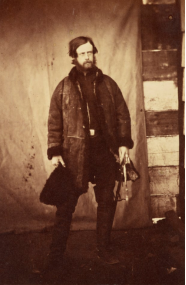

Figure 4: Roger Fenton: The Crimean War 1855
Pictures used for newspapers were routinely cropped, retouched and sequenced without the photographer’s prior knowledge or permission. This was also done for fashion magazines such as Vogue. Vogue airbrushed images of musicians or actors to make them look skinny or a certain way that was not normal. These are two examples of Vogue airbrushing celebrities in post-production to create a certain image.
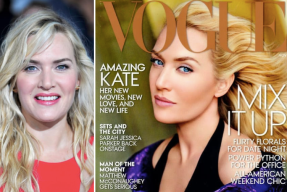
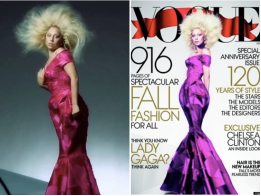
Figure 5: Vogue edit of Kate Figure 6: Vogue editing in post-production an image of singer Lady Gaga
As a result, it is harder to known what the truth is when it comes to imagery these days. This is because it can be edited to suit the process it is being used for, an example it can be adapted to suit the political agenda of the newspapers/magazines they are publishing them in.
Magnum photojournalist photographer Steve McCurry’s most famous photograph was the ‘Afghan girl’. The image was created in 1984 and used for the front cover of the ‘National Geographic magazine’ in 1985.


Figure 7: Steve McCurry’s ‘Afghan Girl’ 1984 (National Geographic Magazine)
However, since then McCurry has been caught in editing scandals. An image in particular is an image he took in Cuba of a street view (fig. 6). McCurry moved the signpost away from behind the man’s leg. This meant that the image was no longer showing this street view exactly as he would have seen it. He also edited another image of boys playing football, the edited version shows less boys in the image.
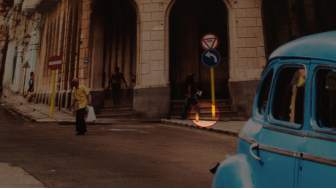
Figure 8: Steve McCurry: Cuba
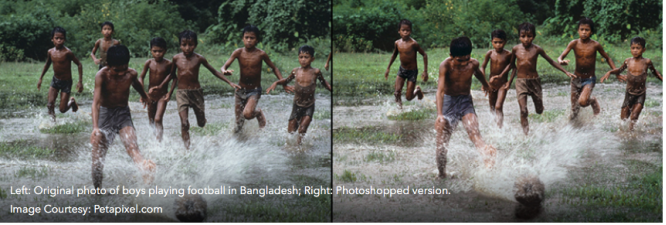
Figure 9: Steve McCurry: Boys playing Football (https://www.firstpost.com/india/fabricated-reality-steve-mccurry-and-the-scandal-of-altered-photographs-2783426.html)
Due to editing software such as Photoshop and Lightroom it is hard to know if images are showing the full truth, and to what extent might they have been manipulated in post-production. Manipulation can also be used by marketers through advertisement and product designs. This is a type of manipulation because they are persuading you to purchase their items over competitors. Images can be manipulated to enhance or saturate the colour and tone of the image. On the other-hand they could be cropped, zoomed in to lead you to a more important object in the image.
Another type of editing is to use people to show others what certain conditions are like in less fortunate countries. This was the case during the ‘Great depression, of the 1930s’, photographed by Dorothea Lang. Her most famous image from that time was named ‘the migrant mother’, photographed in 1936.
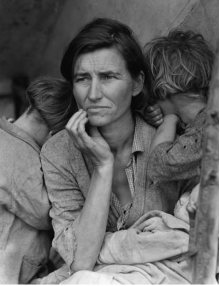
Figure 10: The Migrant Mother Dorothea Lang: during the Great Depression (1936): (http://www.kuriositas.com/2011/11/depression-era-photography-of-dorothea.html)
Post production techniques were developed to allow photographs to be manipulated for a variety of purposes including art, advertising and propaganda. These techniques broadened the range of uses for photography, paving the way for an explosion or increase in demand.
Photography Everywhere
The rise of mass media in Britain came in 1904 with the likes of the women’s magazine, the ‘Daily Mirror’, published in London and the USA version ‘New York Illustrated Daily News’. During this period the newspapers and magazines used a photomechanical process to produce replacers, rather than publishing the original images. This allowed the circulation of images to be brought to the attention of more people.
The early 1920s saw some progress in photography, but newspapers and magazines still required the use of mail and or special delivery of photographs to be used, otherwise known as transitions. This was a slow process, which meant that images would be published sometime after events had taken place. The ‘New York Daily Graphic’ is proof as to how slow this system was, with its article on the Great flood, that killed thousands of people. The flood took place on May 31st, 1889 in Johnston, Pennsylvania USA, but the photos were not published until the 6th of June, the same year. This is due to the time it took to receive and produce the images.  Figure 11: The Great Flood 1889 (www.Alamy.co.uk)
Figure 11: The Great Flood 1889 (www.Alamy.co.uk)
The 1920s also saw the change of motion images; they were originally used solely for amusement but eventually became used for widespread public entertainment. It saw motion pictures adapted from still images into to a multiple collection of moving images creating a movie. These images where shot on film roles. The 1920s took the film making industry to a new high with the likes of Hollywood becoming popular.
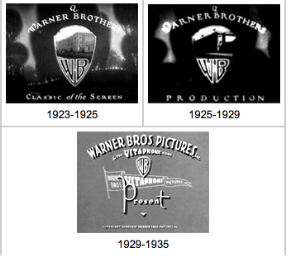
Figure 12: 1923-1935 logos for upcoming movie making firm Warner Bros. Pictures: (https://www.filmsite.org/20sintro.html)
By 1930, about a billion photos were taken a year. Jump forward three decades to 1960 and about 3 billion photos were taken a year. The website (https://www.buzzfeed.com/hunterschwarz/how-many-photos-have-been-taken-ever-6zgv) claims that the main subjects for images were also changing, as in 1960 roughly 55 percent of the images taken where of babies. Due to technological advances by 1970, about 10 billion photos were taken. In just 40 years the number of photographs taken each year had expanded by approximately 9 billion. By 1980 it was predicted that about 25 billion images were taken. 1990 saw roughly 57 billion images taken, which is 32 billion photos each year more than had been produced just a decade earlier.
Fast Forward to 2000 and it was predicted that about 86 billion images were taken. This is an increase of 29 billion, from the previous decade, (not as big of a difference between 1980 and 1990). In the 21st Century the growth of the number of images taken each year keeps increasing due to technological advances. An invention that changed photography, the number of images taken and the way we view them in the 21st century is the ‘smartphone’. Smartphones have allowed photography to be created and viewed by a considerably larger audience. On the downside, it allows more people to class themselves as photographers, reducing the difference between the public and professional photographers.
As a result of the smartphone it makes it harder for Contemporary photographs to make a living from there images. A contemporary documentary photographer, Martin Parr uses humour, in his images in order to compete against the smartphone photographers. According to Parr’s website (https://www.martinparr.com/introduction/) he uses his images to show how we live and present ourselves to others. He also aims to ‘present and publish the same photos in the context of art photography, in exhibitions and in art books’.
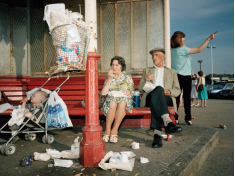
Figure 13: GB. England, New Brighton 1985 (http://www.elvirasmit.com/martin-parr/)
The IPhone created by Apple was the pioneer behind the ‘smartphone age’. Unknown to Apple and the world this invention would change the photographic industry considerably. Some say it was for the best and that it revolutionised photography, on the other-hand others say it did more damage than good, as it led to a rapid decline in camera sales. The original iPhone premiered on the market on the 29th June 2007.
The ‘smartphone’ invention led to the creation of online sharing platforms best known as social media apps. These included the likes of Facebook, Instagram, Snapchat and Twitter. The outcome has been a drastic change as to how we take images. As a result of smartphone and social media platforms photography has become more every day, turning portraiture into selfies. These platforms and the creation of the smartphone has ensured that the number of images taken has risen, it is revealed that now every 2 minutes more images are taken than the number created throughout the 1980s.

Figure 14: Social media platforms: (https://westvancouverschools.ca/chartwell-elementary/social-media-awareness-with-jesse-miller-of-mediated-reality/)
According to the BBC One show in 2018 it is predicted that roughly 1.2 trillion images were taken between January 1st and December 13th, which is the equivalent to about 160 photographs taken by everyone on the planet. Plus, the majority of these images are uploaded to social media, roughly an estimated 1 billion photos are uploaded online every day.
Over time photography has evolved from a highly technical and complex activity, used for scientific experiments to an everyday activity undertaken by majority of the population. It has seen the change from large format cameras into visual, pocket sized digital cameras. Technological advances have also seen the 8 hour exposure created in 1826 by Joseph Nicephore Niepce be squashed into a number of seconds for an iPhone. Over the past two centuries photography has evolved as a medium to record events and as a tool for artistic expression into a tool to promote ideas and products.
Bibliography
• Book: Photography the whole story by Thames & Hudson
• Marien MW (2010) Photography, aculturalhistory (3rd edition) London, Laurence King Limited
• The BBC One Show (13/12/2018)
• Magazine: Digital SLR Photography August 2017 (issue 129) (p23) How the Iphone Changed photography
• Magazine: Professional Photography 2018 (issue 22)
Cite This Work
To export a reference to this article please select a referencing stye below:
Related Services
View allDMCA / Removal Request
If you are the original writer of this essay and no longer wish to have your work published on UKEssays.com then please click the following link to email our support team:
Request essay removal



